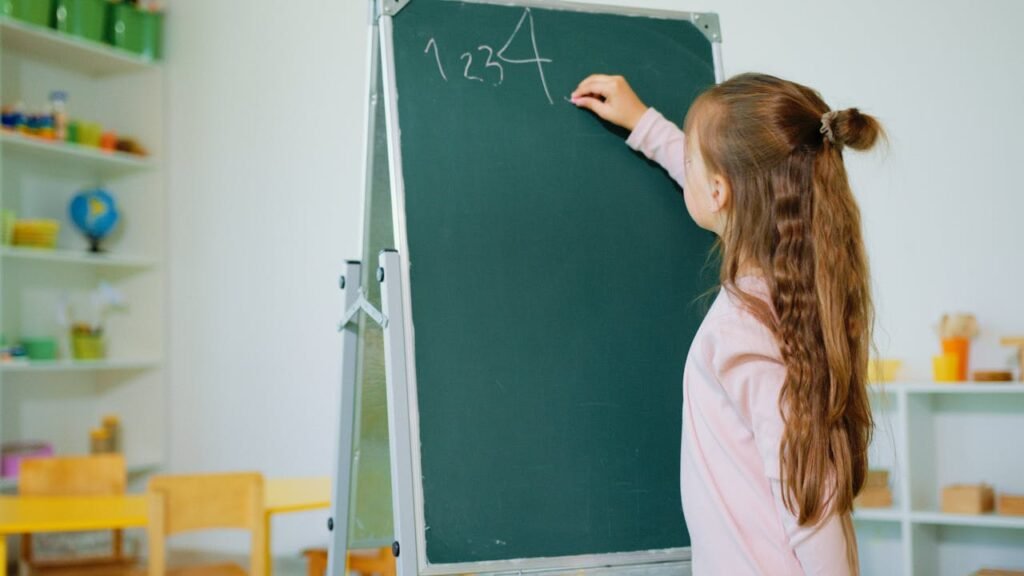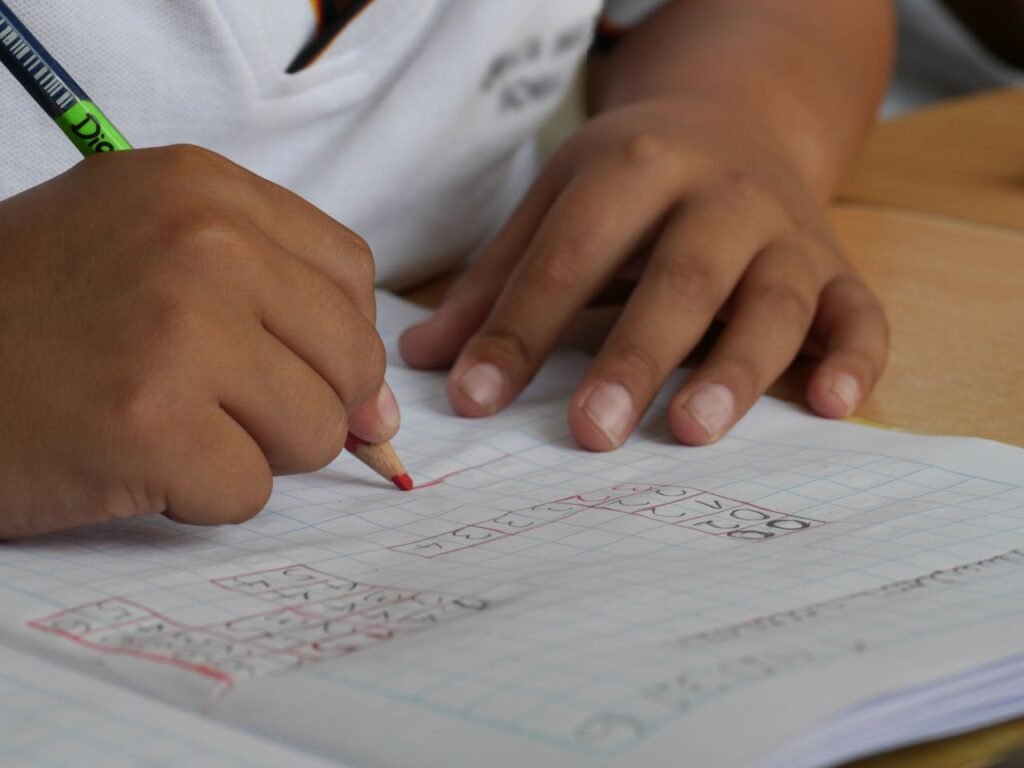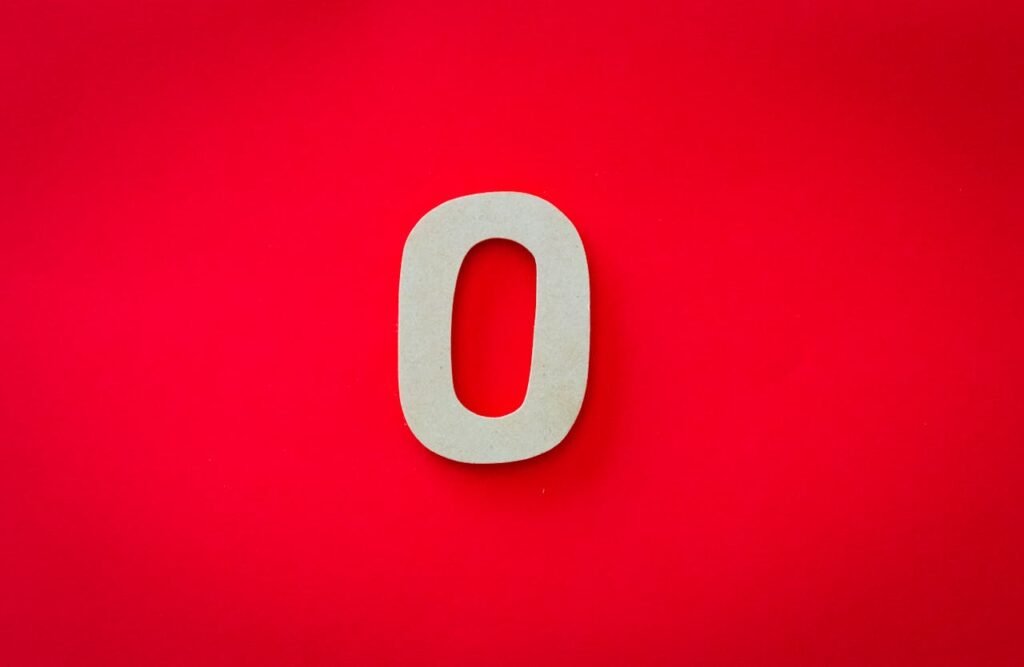Subtraction is already a big deal for young learners. But when they see a problem where they need to borrow or regroup, things can feel confusing fast. Suddenly, they’re not just taking away—they’re changing numbers, moving digits, and trying to remember steps that don’t seem to make sense.
That’s where frustration often begins.
But here’s the good news: subtraction with regrouping isn’t hard when it’s taught the right way. With the right tools, the right pace, and the right kind of practice, any child can master it. And yes—your child can too.
At Debsie, we’ve helped thousands of children around the world move from “I don’t get it” to “I’ve got this!” with subtraction. We don’t rush. We explain every step using pictures, stories, blocks, and games. And we always start with one goal: help the child understand, not just follow rules.
What Is Regrouping in Subtraction?
Let’s start from the very beginning.
When we subtract, we take something away. That part is simple enough. But sometimes, the number we want to subtract is bigger than the number we’re taking it from. That’s where regrouping comes in.
For example:
Let’s say you want to solve 42 − 8.
We look at the ones place: 2 − 8.
Wait—can you take 8 away from 2?
Nope. That’s not possible without going into negative numbers, which young learners aren’t ready for yet.
So we regroup.
We “borrow” from the tens place. We take one ten from the 4 tens (which is 40), and turn it into 10 ones. Now, instead of having 2 ones, we have 12 ones.
And 12 − 8? That works. We get 4.
Then we go back to the tens. We took one ten away from the 4 tens, so we only have 3 tens left.
Now the new problem is:
- 3 tens minus 0 tens (since there’s no tens in 8), which is 3.
So the answer is 34.
That’s regrouping. It’s just moving numbers to make subtraction easier.
Why Regrouping Confuses Many Kids

When you explain regrouping to a child using words like “borrow” or “carry,” it can sound strange—like numbers are disappearing or being taken away secretly. This is what makes it tricky.
What they really need is to see what’s happening.
At Debsie, we always start with objects—blocks, beans, sticks, or cubes. Something they can hold, move, and count.
Let’s go back to 42 − 8.
We give the child:
- 4 ten-sticks (each made of 10 small blocks)
- 2 single blocks
They try to take 8 blocks away. But wait—they only have 2. So what do we do?
We break one ten-stick into 10 singles.
Now they have:
- 3 ten-sticks
- 12 single blocks
They can now take away 8 blocks easily, and the leftover blocks show the answer—4 ones and 3 tens, or 34.
It’s no longer magic. It’s real. It’s visible. It makes sense.
Once a child sees regrouping this way, they start to understand the “why” behind the steps. And once they understand, the fear disappears.
When Should Kids Learn Regrouping?
At Debsie, we usually introduce regrouping after a child is confident with basic subtraction facts and understands place value. That means:
- They know that 42 is 4 tens and 2 ones.
- They understand how to subtract single digits from double digits when no regrouping is needed.
- They are familiar with how numbers are made (tens and ones).
If those pieces are in place, your child is ready to begin regrouping—and actually enjoy it.
Step-by-Step: How to Teach Subtraction With Regrouping
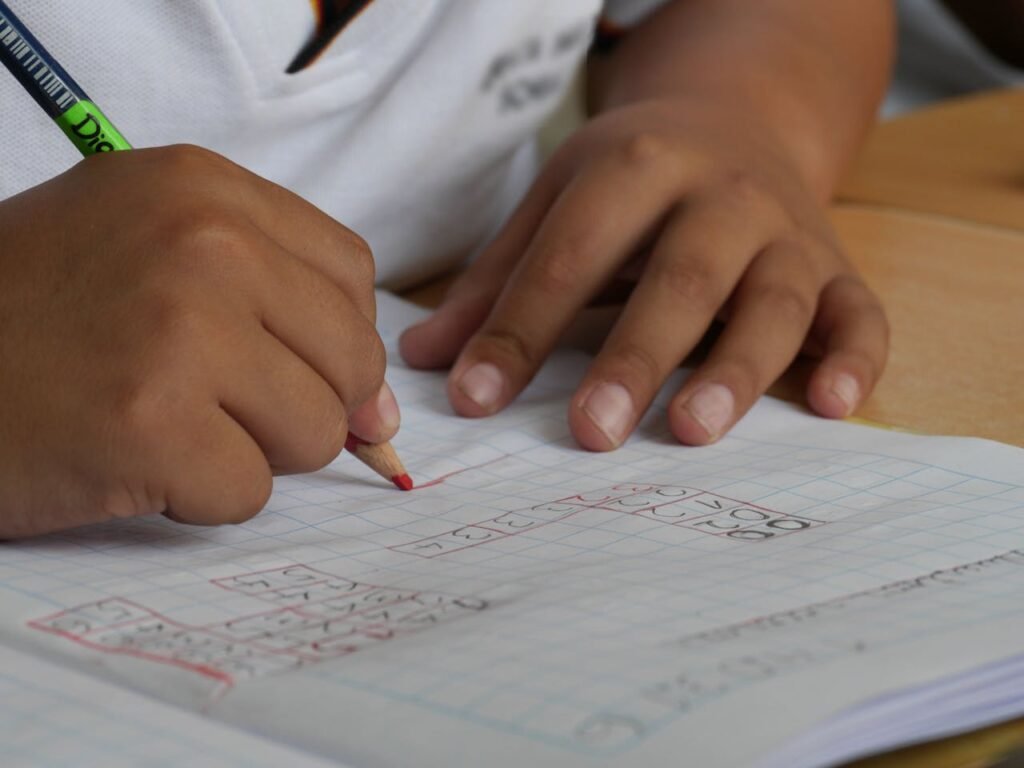
Now that we understand what regrouping is, let’s walk through the steps in a clear and calm way—just like you’d do with your child, side by side.
We’ll use a simple example:
52 − 38
We always start from the ones place. That’s where most regrouping happens.
Step 1: Look at the Ones
In this case, we have:
- 2 in the ones place
- 8 in the ones place of the number we are subtracting
Ask your child:
“Can we take 8 away from 2?”
Let them think about it. The answer is no.
That means we need to regroup.
Step 2: Regroup From the Tens Place
Tell your child:
“We’ll borrow 1 ten from the 5 tens. That’s 10. We’ll add it to our 2 ones.”
Now we have:
- 4 tens (because we borrowed 1)
- 12 ones (because we added 10 to the 2)
You can act this out with blocks, or draw it out with base-ten visuals.
This is where most of the “aha!” moments happen. Once kids see how 10 gets moved into the ones column, the regrouping process starts to click.
Step 3: Subtract the Ones
Now that we have 12 ones, we can do the subtraction:
12 − 8 = 4
Write that answer in the ones place.
Step 4: Subtract the Tens
We borrowed one ten, so now we have 4 tens.
Look at the tens in the number we’re subtracting—it’s 3.
4 − 3 = 1
Write that in the tens place.
Final Answer: 14
So, 52 − 38 = 14
Let your child check it with a model if they like. Or use real objects to show each step again.
What matters most is that they understand the movement of the tens, not just the numbers on the page.
What If the Problem Has Zeros?
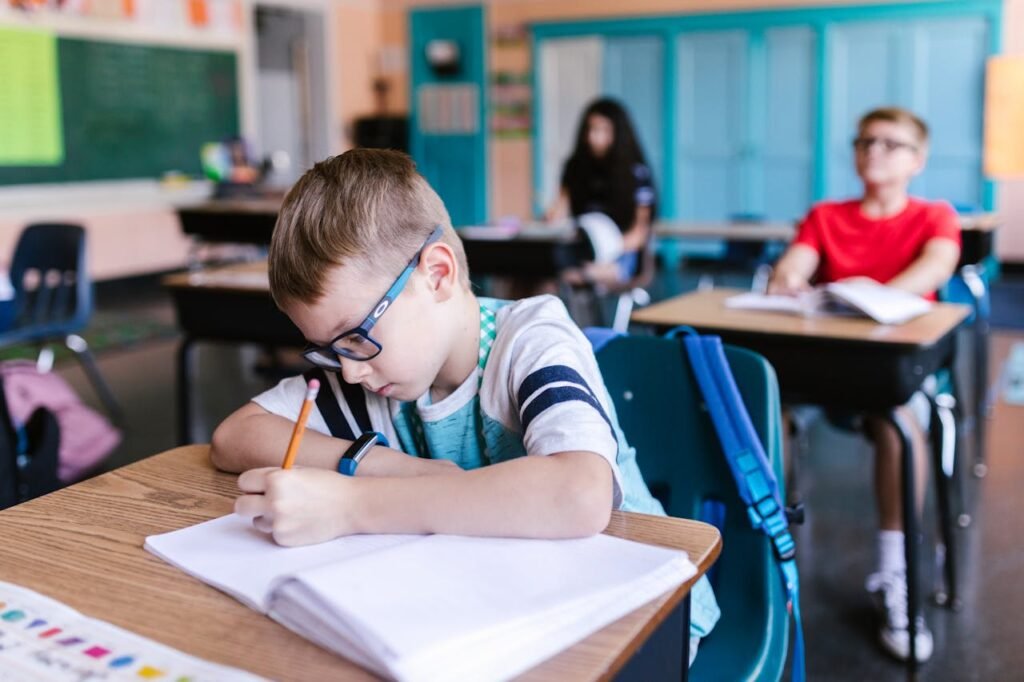
Here’s where regrouping can feel trickier—but we promise it’s still doable.
Let’s say you’re subtracting 402 − 186.
Start at the ones place: 2 − 6.
We can’t do that, so we regroup from the tens place… but wait—it’s a zero.
Now what?
We go to the hundreds place. Take one hundred (which is 100), turn it into 10 tens. Then we take one of those tens (10), turn it into 10 ones.
Now we have:
- 3 hundreds
- 9 tens
- 12 ones
From there, we subtract like usual:
12 − 6 = 6
9 − 8 = 1
3 − 1 = 2
Final answer: 216
It takes practice—but with real tools, visuals, and patient steps, even zeros become manageable.
Using Tools and Visuals to Make Regrouping Real
Regrouping is not just a math step—it’s a big thinking step. And for many kids, seeing what’s happening is the key to truly understanding it. That’s why at Debsie, we always introduce regrouping with visual models and hands-on tools.
Let’s explore a few of the most powerful ones:
Base-Ten Blocks
These are some of the best tools to teach regrouping. Here’s how we use them:
- A small cube stands for one
- A long rod stands for ten
- A flat square stands for one hundred
Now let’s go back to 52 − 38.
We give the child:
- 5 ten rods
- 2 single cubes
They try to subtract 8 cubes but only have 2. So we trade one rod (10) for 10 cubes.
Now they have:
- 4 rods
- 12 cubes
They can now subtract 8 cubes easily—and they see where that “12” came from. It’s not magic—it’s a trade.
These blocks let children move numbers around physically. It shows them that tens and ones are connected and flexible. When they get used to regrouping this way, the paper version makes much more sense later.
Drawn Models or Stick Images
Not everyone has blocks at home, and that’s okay. Drawing can work just as well!
You can draw:
- Lines for tens
- Dots or small circles for ones
Back to 52 − 38 again.
Draw 5 lines and 2 dots. Can’t subtract 8 from 2? Trade a line for 10 dots.
Now you’ve got 4 lines and 12 dots. Cross out 8 dots. What’s left? 4 dots.
Then subtract the tens: 4 lines minus 3 lines = 1 line.
So the answer is 14.
Drawing these steps lets the child see the regrouping in action. It’s simple, clear, and works great for kids who like visuals more than numbers.
Number Bond Models
At Debsie, we also love using number bonds—diagrams that show how numbers split apart.
To solve something like 42 − 8, we draw:
- A big circle for 42
- Then two smaller circles that show the split: one for 30, one for 12 (after regrouping)
Then we subtract 8 from 12, and add back the 30.
This helps kids understand that regrouping is really just breaking a number apart to make it easier to work with.
It shows the why behind the step.
Common Regrouping Mistakes—and How to Fix Them
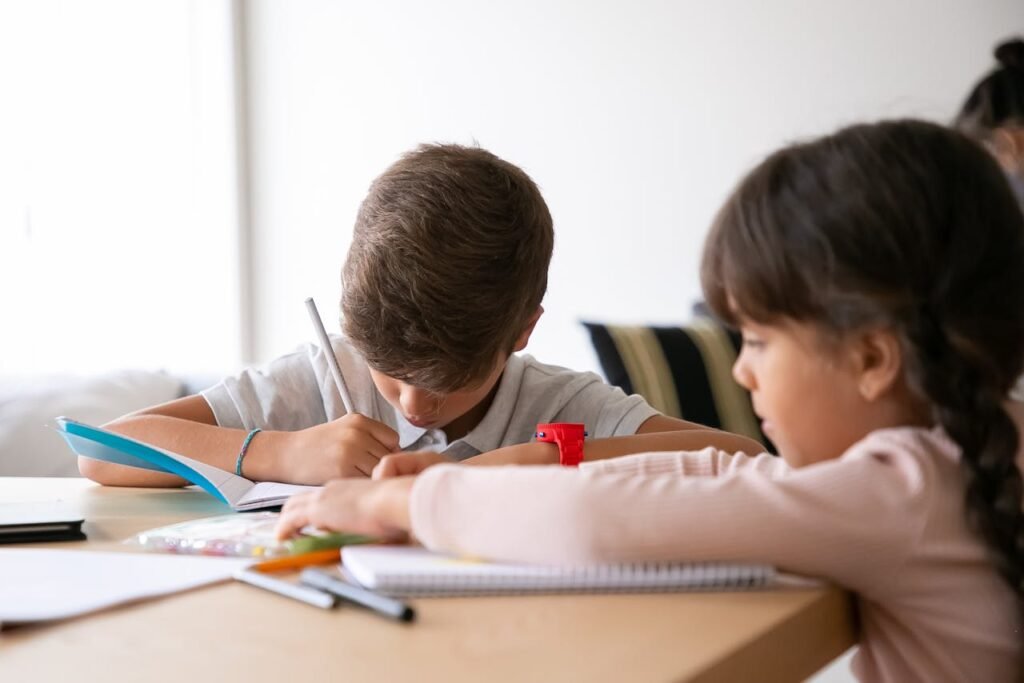
Even with the clearest steps and best tools, regrouping can still feel tricky at first. That’s totally normal. Kids are learning a whole new way of thinking. And like any big idea, it takes time.
At Debsie, we’ve seen many patterns in the kinds of mistakes children make. The good news? These mistakes are fixable. You just need to slow down, go back a step, and help your child see what’s really going on.
Here are a few of the most common regrouping mistakes—and how to respond.
Mistake 1: Subtracting the Smaller From the Bigger—Out of Order
Some children will see 2 − 8 in a problem like 52 − 38 and instead write 6 (because 8 − 2 = 6). They’ve learned subtraction as “take the smaller from the bigger,” but that’s not how subtraction works in regrouping.
What to say:
“Subtraction always starts with the top number. We can’t take 8 away from 2, right? That’s why we regroup. Let’s look at the tens again and see if we can trade to help the ones.”
Go back to the blocks or drawing. Let them see that regrouping makes subtraction possible—not flipping the numbers.
Mistake 2: Forgetting to Subtract From the New Tens
After regrouping, kids sometimes forget to change the tens number. In 52 − 38, they turn the 2 into 12 ones—but forget to change the 5 tens into 4 tens. So they might subtract 3 from 5 instead of 4.
What to say:
“Remember, we gave one ten to the ones place. So now we only have 4 tens left. Let’s check again.”
Have them go back and draw or re-count their tens and ones. That tiny detail—the change in the tens—makes all the difference.
Mistake 3: Regrouping When It’s Not Needed
Sometimes, kids get into a habit of regrouping all the time—even when they don’t have to. For example, in 53 − 21, they might regroup anyway, even though 3 − 1 is easy.
What to say:
“Let’s check the ones: can we take 1 from 3? Yes! No need to trade here. Only regroup if the top number is too small.”
This helps them stop and think. Regrouping isn’t automatic—it’s a smart choice only when needed.
Mistake 4: Getting Stuck on Zeros
Zeros are confusing. In 402 − 186, regrouping gets tricky because there’s nothing to borrow from in the tens place.
What to say:
“It looks like we need to go one step higher. Can we borrow from the hundreds instead? Let’s break one hundred into 10 tens, and then regroup again.”
It may feel like a big jump, but drawing it out slowly makes it clear.
Making Regrouping Stick Through Games and Stories
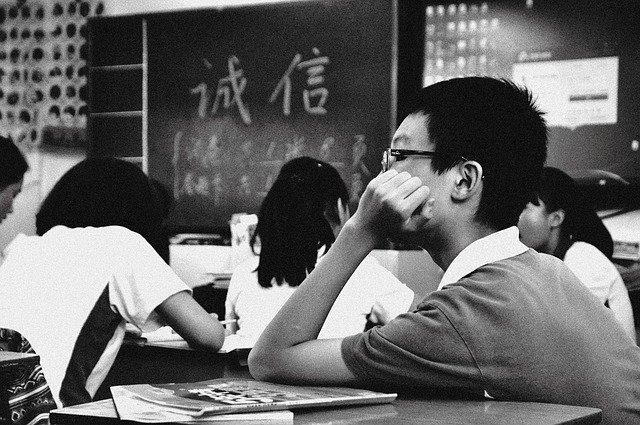
Learning subtraction with regrouping isn’t just about practice—it’s about practice that feels fun. When a child enjoys the learning, they’re more likely to remember it. That’s why, at Debsie, we bring regrouping to life through games, stories, and small math adventures.
Let’s look at a few ways to make regrouping something your child actually enjoys doing.
Turn Regrouping Into a Story
Children love stories. So instead of saying “Let’s borrow from the tens,” turn it into a little adventure:
“Uh-oh! The ones don’t have enough! Only 2 little cubes, and they need to give away 8! So they call their big brother, the tens, and ask for help. The tens say, ‘Sure, I’ll give you 10!’ Now the ones are happy—they have enough to subtract!”
It’s silly, but it works. Stories give numbers personality, and that helps children remember what’s happening. Even better, you can let them make up their own regrouping stories—about animals, candy, superheroes, anything they love.
Use Math Board Games
We love using regrouping in game form. Try creating a simple board game where players solve subtraction problems to move forward. Each correct regrouping lets them take a step. Get a problem wrong? No big deal—just try again.
Here’s how it might work:
- A colorful path with spaces numbered 0–100
- Every space has a subtraction problem on a card
- Roll a dice to land on a space, solve the problem, and keep going
You can make it competitive or cooperative. The point is to turn regrouping into a challenge they want to beat—not something they dread.
Play “Regrouping Shop”
Set up a pretend store with items priced using 2-digit numbers. Give your child “money” with tens and ones. When they “buy” something, they’ll need to subtract to give the right amount of change.
Example:
They have 50. The item costs 36.
Now they need to subtract 36 from 50 using regrouping. Help them count their tens and ones, and show how to regroup the tens into smaller parts.
Suddenly, regrouping feels like something useful—not just a worksheet.
Real-Life Moments Matter
Practice regrouping in daily life:
- When baking, say: “We need 42 cookies, but we already made 18. How many more?”
- When packing snacks: “We have 53 grapes. You ate 26. How many are left?”
Let your child solve it with drawing or mental math, and guide them through regrouping only when needed.
These tiny, natural moments make math feel real and relevant.
How Debsie Helps Kids Master Regrouping With Confidence
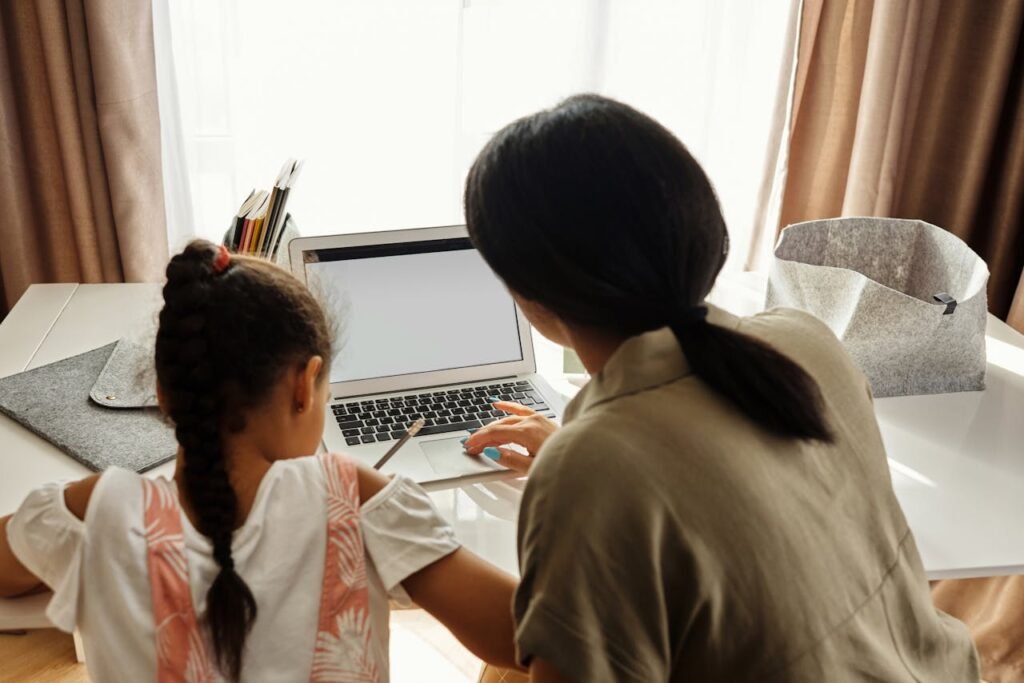
At Debsie, we know that regrouping can be one of the trickiest parts of early math. It’s where many kids start to doubt themselves. But we also know that with the right support, any child can go from confused to confident.
Here’s how we make it happen.
We Start With the Child, Not the Curriculum
Every child learns differently. Some love visuals. Some need to move. Some need lots of time, and some catch on quickly but still need help feeling sure of themselves.
At Debsie, we meet your child exactly where they are.
We don’t throw worksheets at them. We listen. We observe. We guide. Our teachers know how to spot when a child is just memorizing and when they truly understand. And we never push before they’re ready. We build strong foundations first.
That’s how regrouping stops feeling hard—and starts to make sense.
We Use Tools That Make Thinking Visible
Children can’t regroup in their heads until they see it clearly on the outside. That’s why our lessons are full of blocks, pictures, number lines, and real-life objects. We show what’s really happening when a number is “borrowed,” so your child isn’t just copying—they’re thinking.
Once the idea clicks in a child’s mind, the numbers on the paper aren’t confusing anymore. They feel logical. And that’s what we’re after—true understanding.
We Turn Mistakes Into Learning Moments
When a child gets something wrong, we don’t say, “Oops, that’s wrong.” We say, “Let’s take another look—what’s your brain trying to do?”
At Debsie, mistakes are part of the magic. They show us what’s missing and where to focus. And when a child fixes a mistake on their own—with our gentle help—they feel proud. That pride builds math confidence like nothing else.
We also give lots of praise. Not for speed. Not just for getting it right. But for thinking carefully, for being brave, and for sticking with it.
We Practice Regrouping in Fun, Real Ways
From day one, our regrouping practice is full of stories, visuals, games, and playful challenges. We teach subtraction like it’s a puzzle to solve, not a test to pass.
Sometimes we do regrouping treasure hunts. Sometimes we play “missing number detective.” Other times we build fun little math shops and buy things using subtraction.
Every lesson has a spark of joy.
And that’s the secret: when a child enjoys math, they’re more willing to try. And when they keep trying, they start growing.
Regrouping Builds Bigger Thinking Skills
When a child learns how to regroup, they’re not just learning a math step. They’re learning how to solve a problem, how to be flexible, and how to break things down into smaller parts when something feels too big.
That’s a skill they’ll use far beyond subtraction.
At Debsie, we believe regrouping teaches more than math. It teaches how to think.
And that’s what we’re really here for.
We’re here to help children:
- Understand the “why,” not just follow steps
- Practice in a way that feels calm and playful
- Move from fear to confidence, one moment at a time
And most of all, we help them feel proud of their brain.
The Last Word: Big Skills Start With Small Steps
Regrouping might seem hard at first—but it’s not about speed or getting every step perfect. It’s about helping your child see numbers differently. It’s about building a brain that isn’t afraid to try, think, and solve. That’s what real learning looks like.
At Debsie, we believe in making those “hard” things feel easier—because we teach with heart. We don’t just want your child to do subtraction. We want them to understand it, enjoy it, and feel proud of their progress.
So whether your child is just beginning regrouping or struggling to keep up, take a deep breath. They can do this. And we’re here to help every step of the way.
👉 Sign up for a free Debsie class today and watch your child light up as subtraction finally makes sense
👉 Explore all our expert-led subjects for ages 5–18: math, science, coding, and more—personalized for every learner.
Read Next:
